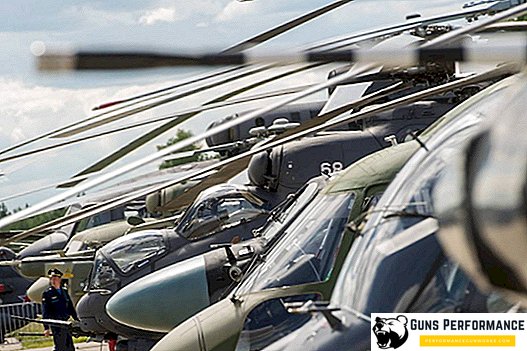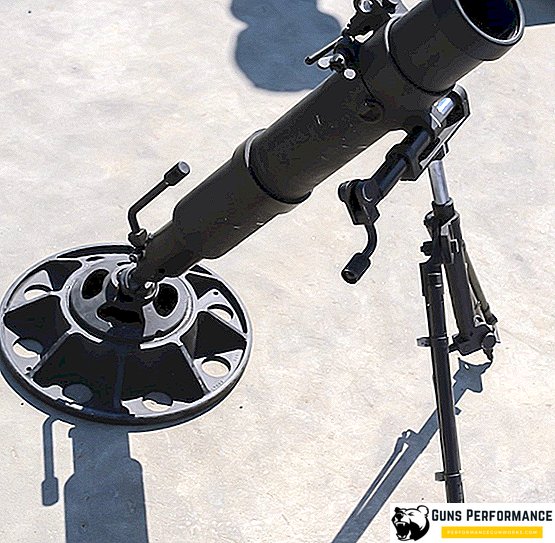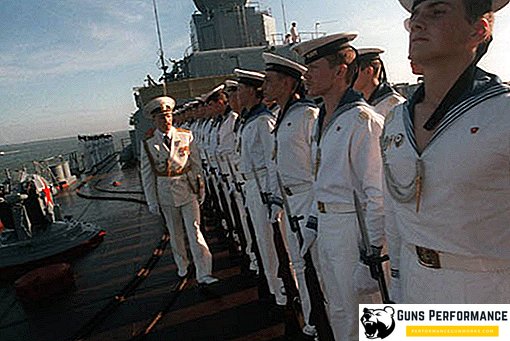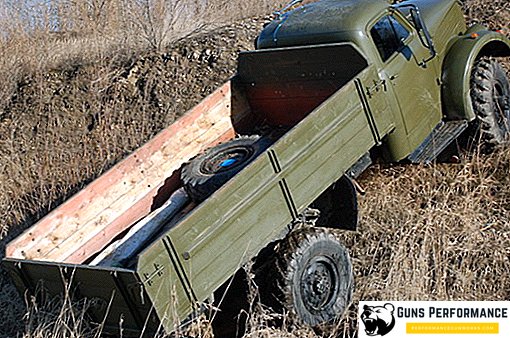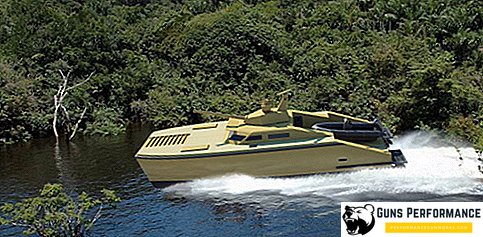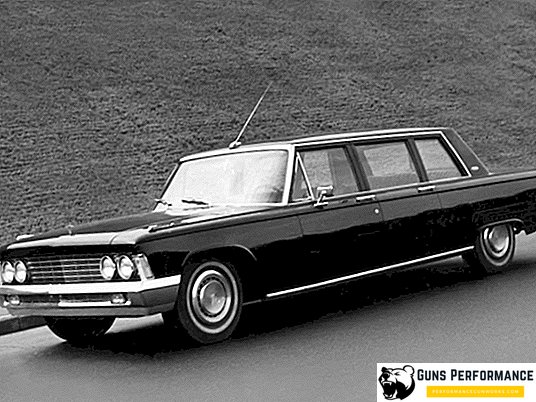In this submarine everything was amazing. Unprecedented titanium case, unique weapon systems and ascent. And even the facts related to the death of this ship have no analogues in the history of the submarine fleet. A quarter of a century after the death of the boat, the controversy over the causes of its disaster does not subside.

Submarine K-278 "Komsomolets" ("Mike", according to NATO classification) was laid in 1978 at the shipyard in Severodvinsk, but work on a unique ship began a decade earlier - in 1966. The developers of TsKB-18 were assigned the task of creating a combat submarine with an incredible depth of immersion, and I must say that they accomplished this task brilliantly. Design work was completed in 1974. The K-278 was the first (as it turned out the last) submarine of Project 685 Fin.
From the very beginning of its construction, the mystery surrounded this submarine. The Western press wrote about the allegedly incredible speed of the new Soviet submarine and its secret weapons, or that the Soviets were building a submarine of enormous proportions. All this is not true.
Because of the cost of the boat and because of the duration of the design and construction, the sailors affectionately nicknamed the K-278 "golden fish".

Description of K-278
"Komsomolets" - a nuclear submarine, which belongs to the third generation of submarines. The boat carried nuclear weapons on its board, but it did not belong to strategic submarines, to "city killers." K-278 was not armed with intercontinental missiles with nuclear warheads, its task was to fight with enemy ships and submarines. Moreover, the K-278 could strike the enemy, while remaining unpunished.
The submarine could sink into unimaginable depths, where previously no warship could penetrate. Its design depth is 1000 meters. Before the advent of the K-278, only a few scientific bathyscaphes, having a small size and a huge cost, fell to such depths.

Soviet developers were given the task of making a warship that could sink to a depth of 1000 meters, freely maneuver there and strike at the enemy. The fact is that the K-278 was practically invulnerable to conventional weapons: any torpedo or depth bomb would crush the pressure long before it could reach a kilometer depth. Moreover, it is almost impossible to even find a boat at such a depth: below the depth of four hundred meters under the action of pressure and temperature, the water changes its properties, and it is almost impossible to “hear” the boat. Does not work at such depths and echo sounder.
All this promised unprecedented advantages of a deep-sea submarine, but the problems faced by its builders were also outstanding. The durable hull had to be made of titanium, which incredibly increased the cost of the ship and added a lot of gray hair to shipbuilders. Titanium interacts very badly with other metals, welding it requires special conditions and it can be said for sure that no one has ever made titanium products of this size in the world. Many other problems arose before the developers (for example, how a boat to ascend from such depth), but all of them were successfully solved.
On the territory of the shipyard, where the work on the construction of the boat was carried out, three huge pressure chambers were equipped, in which knots and entire compartments of the future submarine were tested.

The K-278 case was shaped to minimize water resistance. Lightweight body was also created using titanium alloys. Durable housing was divided into seven compartments. Developers sought to reduce the number of compartments in a robust case. A special pop-up camera was provided at Komsomolets, which the crew could use in the event of a disaster.
It is also worth mentioning the special ascent system “Iridium”, which blew the ballast tanks with the help of powder gas generators. Otherwise, it was impossible to ascend from the depths to which the submarine could sink.
The Komsomolets was armed with torpedoes and Granit cruise missiles. Both could be equipped with a nuclear warhead. The boat had six nasal torpedo tubes, caliber 533 mm. The boat could shoot even at the maximum depth of the dive.

The power plant K-278 was represented by the reactor OK-650B-3, with a capacity of 190 MW.
Summing up the description of the boat, it can be said that its creators were faced with a task no less difficult than the designers of spacecraft, and in some aspects, perhaps, it was even more difficult for them. But Soviet shipbuilders fulfilled their mission with honor, and the K-278 became the pride of the USSR Navy. This ship was to become a kind of test model, the experience gained during its creation, planned to use when building the following such ships. But alas. This was not to be. "Komsomolets", the first ship of this series was killed, and then there was no country that knew how to build such vessels.
Technical characteristics K-278 "Komsomolets"
The table below shows the technical characteristics of the submarine K-278.
Displacement, t | |
| Surfaced | 7800 |
| Underwater | 9700 |
Sizes, m | |
| length | 110 |
| Width | 12 |
Power point | |
| power plant | water reactor OK-650B-3 |
| reactor power | 190 MW |
| number of steam generators | 4 |
| additional EI | diesel generator, battery |
Travel speed | |
| surface | 11 knots |
| underwater | 31 knots |
Immersion depth, m | |
| project | 1000 |
| Maximum | 1250 |
Armament | |
| Torpedoes | 6 nasal TA, caliber 533 mm; 22 torpedoes |
| Rockets | 10 rocket launchers |
| Autonomy | 180 days |
| Crew | 60 people |
The history of the submarine K-278 "Komsomolets"
- 1976 K-278 enrolled in the list of the Navy of the USSR.
- 1979 year. Compiled by the main and reserve crews of the boat.
- 1983 Launching. In the same year, the boat successfully passed the sea trials and was put into service.
- 1985 Were conducted deep-sea tests of the ship. The boat reached a depth of 1027 meters. Training shots with torpedoes were conducted at a depth of 800 meters.
- 1987 year The trial operation phase has been completed.
- 1989 The ship received the honorary title "Komsomolets".
- April 7, 1989. During the return to the base, at a depth of 380 meters, a fire broke out in one of the compartments of the boat. The boat urgently surfaced. After the signal, rescue aircraft were sent to the emergency boat. Due to the fire, the durable hull of the boat lost its tightness and at 17.08 the boat promptly sank. The result of the disaster were 42 dead sailors.

Causes of the death of the submarine
The fire began in the 7th compartment. About the reasons for its occurrence disputes do not subside so far. The main version of the fire is a strong voltage drop in the ship's power grid, due to a malfunction of the turbine generator protection system, which caused fires in boards and control panels throughout the ship. Immediately after the start of the fire, the fire extinguishing system (LOH) was turned on, but it could not cope with the fire. Automatic protection turned off the steam generators and the boat stopped.
After that, a command was given to blow the main ballast, but in the 7th compartment the high pressure pipeline was damaged and high pressure air began to flow into the burning compartment, turning it into an open-hearth furnace. A voluminous fire started with a very high temperature. The neighboring, the 6th compartment, also began to burn, a few more were heavily smoked. A few electric boards in different compartments caught fire. The boat several times tried to contact the headquarters, but it was not possible immediately.

Combustion products got into the air supply system for hose breathing apparatus, which caused seamen to be poisoned. The water began to flow into the solid hull of the 7th compartment, and after that the ship was already doomed. The boat began to "fall" aft and sank in a few minutes. People ended up in icy water, holding onto tiny rafts. The Soviet floating ship "Alexey Khlobystov" picked up 30 people, three of them died on the way to the port. The commander of the K-278 - Yevgeny Vanin was also on the list of the dead.
Video about the submarine Komsomolets
In Russia, the day of the K-278 crash is celebrated as "The Day of the memory of the dead submariners."


